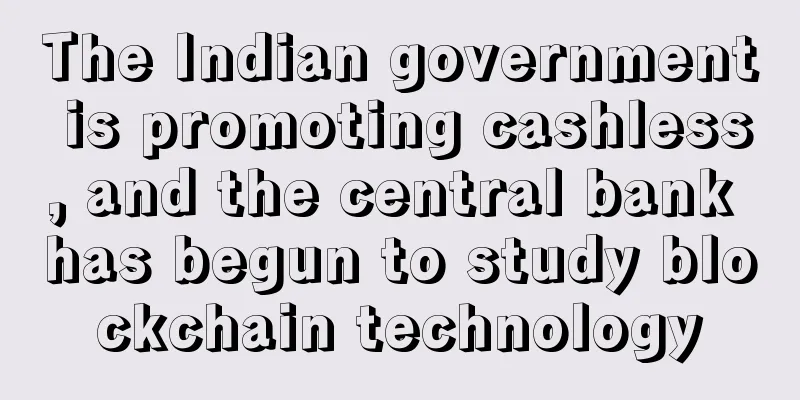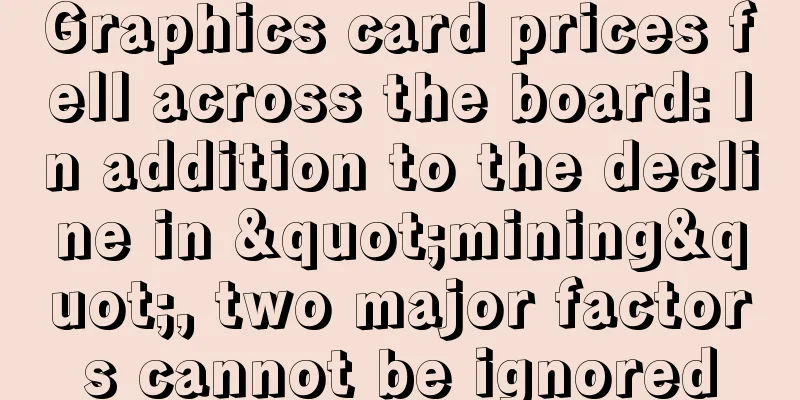The Indian government is promoting cashless, and the central bank has begun to study blockchain technology

|
Rage Review : The Indian government continues to pursue its controversial plan to eliminate cash across the country, and at the same time, a group of researchers at the central bank have called for an investigation into whether blockchain can help achieve this goal. Last week, the Institute for Development of Banking Technology (IDRBT) published its first major blockchain white paper, which not only outlines the overall structure of blockchain technology and its potential use in the Indian banking industry, but also emphasizes that now is the best time to evaluate how India's national currency, the rupee, can be digitized through distributed ledgers. Translation: Flora Will blockchain technology lead to cashlessness in India? As the Indian government pushes ahead with its controversial plan to make the country cashless, a group of researchers at the central bank has called for an investigation into whether blockchain can help achieve the goal. The Institute for Development and Research in Banking Technology (IDRBT), set up by the Reserve Bank of India (RBI) in the 1990s, published its first major blockchain white paper last week, including details of a trial application for trade finance. In addition to outlining the overall structure of blockchain technology and its potential use in the Indian banking sector, the white paper also states that now is the right time to evaluate how India’s national currency, the rupee, can be digitized through a distributed ledger. Narendra Modi After being widely criticized for its move to abolish high-value banknotes in early November, Prime Minister Narendra Modi’s government has since laid out a two-pronged plan: Later that month, he called on Indians to accept digital currencies, while the government began amending laws to help implement the plan. The Institute for Banking Technology Development believes that blockchain can help achieve its goals. The entire report highlights the success stories of central banks in countries such as Canada and the United Kingdom. The report authors wrote:
Roadmap The authors also suggest that India’s broader banking sector try other ways to experiment with blockchain technology. First, the report recommends that banks consider building their own internal blockchain networks, both to help achieve training goals and as a means of testing what blockchain technology can mean for them. The report states:
The Institute for Banking Technology Development further stated that based on this, major banks can cooperate in the areas of AML/KYC, loan syndication and trade finance. The authors add:
The development of blockchain technology in India Given recent developments in blockchain technology, it’s perhaps unsurprising that the research team would call for wider use of blockchain in India’s financial sector. Last summer, the Reserve Bank of India called on major domestic banks to study blockchain and work with the Institute of Banking Technology Development to develop possible applications. Rama Gandhi In a speech in July, Rama Gandhi, Deputy Governor of the Reserve Bank of India, said:
In mid-2015, Indian central bank officials pointed out that digital currency could not only strengthen anti-money laundering efforts, but also improve financial inclusion and reduce payment frictions. Since then, many financial institutions and private stakeholders outside the banking world have begun exploring blockchain use cases and developing products using the technology. |
<<: Blockchain in mortgage lending: Interesting, but premature?
>>: Looking at the challenges of blockchain from the development history of the Internet of Things
Recommend
How is the marriage of people with moles on the bridge of their nose? Is divorce likely to occur?
Everyone hopes that their marriage will be happy, ...
What is Cross-Eye? What are the personality traits of people with cross-eyes?
Different friends have different eyes, and differ...
Singapore becomes a cryptocurrency "safe haven": the first batch of trading platforms have received "in-principle approval"
A few years ago, central banks around the world b...
EOS mainnet voting rate exceeds 15%, officially launched
On June 15, according to IMEOS, in the early morn...
People with these facial features are most likely to fight violence with violence.
There are always some people in society who rely ...
Is it the bottom or the mountainside after the big drop? The long and short forces are engaged in a tug-of-war
On July 5, the crypto market experienced another ...
People with moles on the left neck have the best study room layout like this
People with moles on the left side of their neck ...
Smart contracts face ‘imminent challenges’ as ‘code is law’ faces controversy
If a certain repetitive task can be replaced by s...
How to read a man's face and ears
The ear is called the palace of adoption in the t...
It is too dangerous to replace the card with a mobile phone. The guy had Bitcoin worth 380,000 yuan stolen
Two years ago, Bitcoin (an electronic currency) b...
What are the facial features of women who are unlucky in childbearing? Will a sunken nose bridge mean that she is unlucky in childbearing?
Every girl is full of expectations for her child,...
Does France need to have its own mines? French lawmakers propose giving miners preferential electricity prices. Can France, which relies on nuclear power for electricity, attract a wave of miners?
Whether France can provide policy support to mine...
What does a mole between a woman's eyes mean? Is it good for a woman to have a mole between her eyes?
What does it mean if a woman has a mole between h...
What are the characteristics and meanings of moles on the hands
In mole physiognomy, moles on the palms are quite...
The first 421 Flood Festival: Bitcoin halving is imminent, is the multi-billion mining industry fully prepared?
The countdown is 20 days, which is the day when m...









